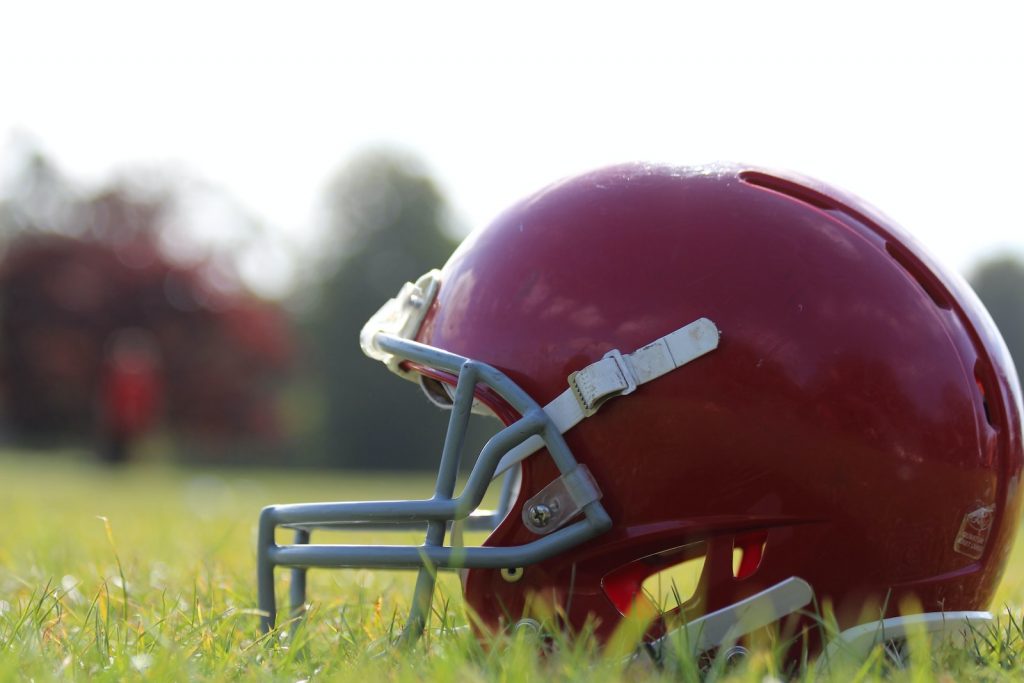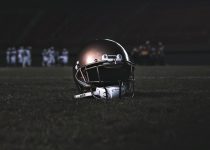Revolutionizing the Game: Gallaudet's Impact on Accessibility and Innovation in Football

The New Accessible Technology in Football
The modern age has seen the rise of numerous technological advancements specifically tailored to help players with disabilities remain competitive in various sports. In American football, new technology is being developed to cater to the specific communication needs of deaf athletes on the field. A shining example is the integration of helmet-intercom systems in football helmets used by athletes at Gallaudet University, a college that caters primarily to the hearing impaired.
Shelby Bean's Experiences as a Deaf Football Player
Shelby Bean, an assistant coach for Gallaudet's football team, is no stranger to the challenges of playing football with a hearing impairment. Communication, an essential aspect of football, poses significant difficulty for Shelby and his teammates, as traditional hand signals have often proven insufficient during games. However, the opening of opportunities with the debut of innovative technology aimed at resolving such issues has greatly improved the situation.
The Debut of a New Football Helmet Technology for Quarterbacks at Gallaudet
A dual-receiver helmet was debuted at Gallaudet for quarterback use in American football games. With this helmet, quarterbacks can interact more efficiently with the coach on the sideline, who utilizes a radio transmitter to relay instructions. This connection is fortified with a signal amplifier, which accounts for potential interference and guarantees seamless communication. The effectiveness of this technology is particularly pronounced in Shelby's team, where it has revolutionized the speed and accuracy of play calls.
Application of Technology in Brandon Washington's Offense
Brandon Washington, Gallaudet's quarterback, is another beneficiary of this innovative technology. With the helmet, Washington can now bypass the age-old use of hand signals and cadence reading to make snap calls. This smooth transition from conventional play calling, often fumbled by auditory and visual distractions on the field, to the more precise and direct commands via the helmet marks a significant step forward in accessible football technology. Washington's improved communication with the coaching staff has drastically enhanced the team's offensive strategies.
Milestone Coincides with Gallaudet's First Win of the Season
Fittingly, the debut of this cutting-edge technology coincided with Gallaudet's first victory of the season, a landmark win that underpins the potential impact of accessible tech in sports. With equal competitive opportunities granted to players regardless of their hearing abilities, it is clear that the role of technology in leveling the playing field can only be emphasized. From Shelby Bean to Brandon Washington, these positive strides inspire future sports tech and affirm the physical and mental endurance of deaf athletes.
Gallaudet: a Pioneer for the Deaf and Hard-of-Hearing Community
With transformation at the heart of its curriculum, Gallaudet University has been a pioneer, striving to bridge the communication gap encountered by the Deaf and Hard-of-Hearing community. The university has embraced technology as a powerful tool to forge progress in challenging stereotypes and prejudices associated with communication barriers. This pursuit has unearthed many opportunities and possibilities, marking Gallaudet as a leading change agent for the Deaf and HoH community.
Early Contributions Include the First Dictionary of American Sign Language
In their pursuit of equal access to language and knowledge, Gallaudet made remarkable strides by pioneering the first Dictionary of American Sign Language. This monumental contribution underscored the linguistic richness of the language, which for long was relegated to the fringes of communicative approaches. The dictionary recognizes American Sign Language (ASL) as a fully independent language and valorizes its cultural and communicative relevance.
Technological Developments: Video Phones, Translation, and ASL Recognition Applications
Gallaudet's juggernaut of innovation continued to roll, advancing beyond traditional frameworks to seize the opportunities of the digital era. Introducing video phones on campus attests to the university's ceaseless endeavors to enable real-time, remote communication for the Deaf and HoH community. Simultaneously, Gallaudet harnessed sophisticated technology to develop translation and ASL recognition applications, catapulting ASL into the digital age and ensuring its users remain connected in a swiftly evolving world.
These remarkable technological advancements have cemented the university's profound role as an incubator of technology that transcends its campgrounds to broader societal spheres. The potential of these breakthroughs has also been recognized as valuable tools for firefighters, construction workers, and first responders, simultaneously enabling greater access to jobs and everyday activities for the Deaf and HoH community.
Potential Implications for the Helmet Technology
The groundbreaking helmet technology developed by Gallaudet University, in partnership with AT&T, not only offers an innovative solution for better communication during American football games but also holds promising implications for various noisy environments and jobs. This technology, a gatekeeper of accessibility for the Deaf and hard-of-hearing community, has garnered significant interest from diverse groups of individuals, transcending far beyond sport.
Possible Use in Various Noisy Environments and Jobs
The newly developed helmet technology could be invaluable in numerous noisy or disruptive environments where vocal communication can be hindered. Industrial sites, live music events, or even bustling city locations could utilize this technological innovation to ensure effective communication. This application extends to various professions, offering clarity of communication amidst cacophony.
Use for Firefighters, Construction Workers, and First Responders
The emergency services sector is one area where this helmet technology seems to hold immense promise. Firefighters, construction workers, and first responders often operate in noisy and hectic environments, where clear and immediate communication can significantly affect the effectiveness of responses and actions taken. The Gallaudet helmet's integrated communication system could be an indispensable asset in these fields.
Impact on the Deaf and Hard-of-Hearing Community
For the Deaf and hard-of-hearing community, this football helmet is more than a piece of sports gear; it symbolizes a beacon of inclusivity and accessibility. This technology showcases the potential for innovative solutions to enhance communication and offer equal opportunities for community members. It opens up new possibilities for Deaf individuals to participate in jobs and activities that were traditionally challenging due to communication barriers.
Inquiries and Interest from Youth Coaches and Parents
Introducing this helmet technology has stirred interest not only among the Deaf and hard-of-hearing community but also among youth coaches and parents who see the value it presents in enhancing communication on the field. This technology is a game-changer, making it a topic of interest among wider audiences. It may not be long before we see this innovation integrated and normalized in various sports training and games nationwide.
The Development of the Helmet Technology
The journey to creating this groundbreaking helmet technology, specifically designed to aid the Deaf and hard-of-hearing players, was propelled by Gallaudet University's commitment to fostering inclusive sports practices and mitigating communication barriers. This invention is an outcome of extensive research, collaboration, and testing.
Helmet's Trial Under a One-Game Waiver by the NCAA
The NCAA gave the experimental introduction of the dual-receiver helmet the green light under a one-game waiver. This trial was a significant milestone, enabling a pragmatic evaluation of the efficacy of the helmet under actual game conditions. The initial adoption of the technology received rave feedback, paving the way for a possible future in American football with expansive applications.
Collaboration with AT&T for Technology Development
This helmet technology is a product of a successful collaboration between Gallaudet University and global telecommunications company AT&T. Using advanced signal amplifiers to relay directions from the sidelines to the quarterback; the technology was specifically tailored for seamless and efficient communication. It addresses potential signal interference issues, ensuring the technology functions optimally in various environments.
Involvement of Players, Coaches, and Deaf Employees in its Development
The development process was meticulously executed by weaving in the energy, talent, and expertise of Gallaudet's players, coaches, and Deaf employees. The user-centric design method rallied around the practical insights and feedback from the intended users. It exemplified the power of diversity and inclusivity, producing a piece of technology specifically tailored to the needs of the Deaf community.
Hopes for Full-Time Use and Widespread Application
With its initial successful implementation, there are high hopes for the helmet's full-time use and potential widespread application. Beyond the sports field, this ingenious technology could revolutionize the lives of those working in busy and noisy environments. From factories and construction sites to emergency services, the potential applications of this communication technology are boundless. They could trigger a wave of similar innovations, paving the way for an inclusive society.
